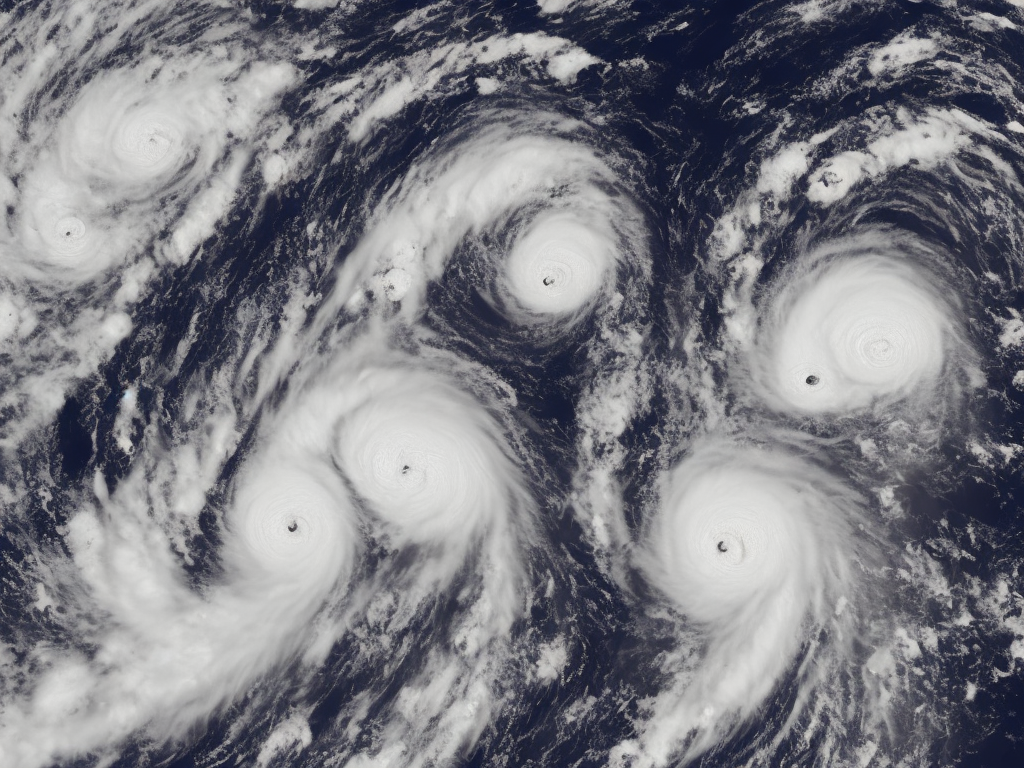
What Is The Difference Between Hurricane And Typhoon
Natural disasters can be both awe-inspiring and devastating, and two of the most notorious are hurricanes and typhoons. These powerful tropical cyclones can cause widespread destruction and wreak havoc on coastal communities. While hurricanes and typhoons share many similarities, they do have some key differences. In this article, we will explore what sets these natural disasters apart.
First, let's define what a hurricane and a typhoon are. Both hurricanes and typhoons are tropical cyclones – large rotating storm systems that form over warm ocean waters. They derive their energy from the evaporation of warm seawater, creating intense winds and heavy rainfall. Usually, these storms occur in regions near the Equator, including the Atlantic Ocean, Eastern Pacific Ocean, and the western Pacific Ocean.
So, what is the main difference between a hurricane and a typhoon? Generally, the term used depends on the location of the storm. In the Atlantic Ocean and Northeast Pacific Ocean, these storms are referred to as hurricanes. In the Northwest Pacific Ocean, on the other hand, they are called typhoons. Why the difference in naming? It has to do with the regions they form in and the countries that are impacted.
Hurricanes primarily affect the Americas, particularly the Atlantic and Gulf of Mexico coastal areas. These storms typically form from tropical disturbances that emerge from the African coast. As they move westward across the Atlantic, they may gain strength and develop into hurricanes. The naming of hurricanes in the Atlantic basin follows a strict tradition set by the World Meteorological Organization (WMO). Each year, a predetermined set of male and female names are assigned to tropical storms that reach a certain intensity. These names, such as Katrina, Sandy, or Andrew, help researchers track each storm and its impacts.
Typhoons, on the other hand, are most prevalent in the western North Pacific Ocean. This region is hit the hardest by tropical cyclones, with an average of 25 typhoons forming each year. The naming of typhoons is a bit more complex. In the past, they were named after the natural disasters they caused. However, since 2000, the Japan Meteorological Agency has adopted a more conventional approach, following the WMO's naming system. Typhoons are given names based on a list generated by 14 different countries in the Northwest Pacific region. Some famous typhoons include Haiyan, Mangkhut, and Vongfong.
Another key difference between hurricanes and typhoons is their size and intensity. Generally, typhoons are known to be larger and more intense compared to hurricanes. Typhoons tend to have a larger eye and a broader area of strong winds and heavy rainfall. The Pacific Ocean, where typhoons commonly occur, is much larger than the Atlantic Ocean, allowing these storms to develop and intensify over a larger expanse of warm water. Consequently, typhoons often reach higher wind speeds and can be more destructive than hurricanes.
While both hurricanes and typhoons are capable of causing tremendous damage, they tend to affect different regions differently. Due to their location, hurricanes predominantly threaten coastal areas of the Americas. In recent years, we have witnessed devastating hurricanes like Katrina in 2005, which caused widespread destruction in New Orleans and other parts of the southern United States. More recently, Hurricane Harvey hit the Gulf Coast in 2017, causing record-breaking rainfall and catastrophic flooding in Houston.
Typhoons, on the other hand, mainly impact parts of Asia. Countries like the Philippines, Japan, and China experience the worst of these storms. The devastating Super Typhoon Haiyan, which struck the Philippines in 2013, serves as a stark reminder of the destructive power of typhoons. It is estimated that this typhoon caused the deaths of over 6,000 people and resulted in extensive destruction in the affected areas.
Lastly, the frequency and seasonality of hurricanes and typhoons differ. In the Atlantic Ocean, hurricane season runs from June 1st to November 30th, with peak activity occurring in September. During this period, conditions are favorable for the formation and intensification of hurricanes. In contrast, the Northwest Pacific sees typhoons year-round, but the peak season is from May to October. This is when the Pacific has its highest sea surface temperatures, providing the warm and moist environment these storms require to develop.
In conclusion, while hurricanes and typhoons share many similarities, there are some notable differences between the two. Their naming conventions, size, intensity, geographical distribution, and seasonality all set them apart. Hurricanes predominantly affect the Americas, while typhoons target the western Pacific region. Understanding these differences can help in disaster preparedness and response, as the unique characteristics of each cyclone must be considered when preparing for their potential impact. Both hurricanes and typhoons are formidable forces of nature that demand our respect and attention to safeguard the lives and property of those in their paths.
 Self-Instruct
Self-Instruct